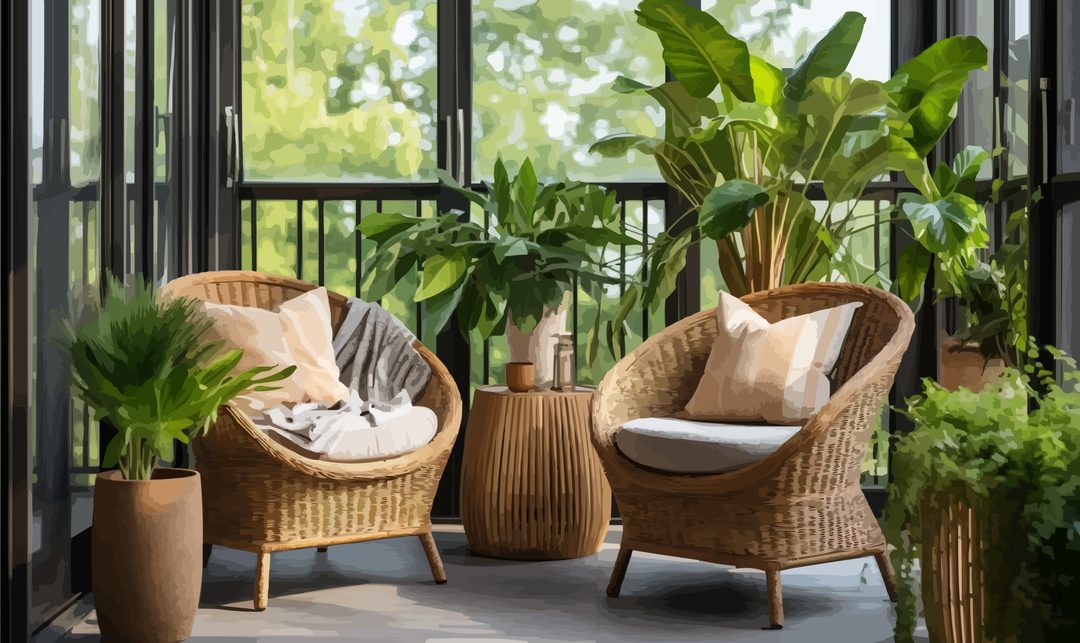Sustainable Interior Design: Trends and Best Practices for Eco-Friendly Spaces
With an increasingly conscious world about environmental issues, the importance of sustainability in various industries is growing. It is here that in interior design, this shift toward eco-friendly practice is not only a trend but a necessity. Sustainable interior design is focused on reducing the environmental impact of buildings while enhancing the well-being of their occupants. From using sustainable materials to energy-efficient designs to innovative waste-reduction strategies, designers are capable of making spaces that are both beautiful and environmentally responsible.
Sustainable Materials
Eco-friendly materials are one of the cornerstones of sustainable interior design. Such materials do not only reduce environmental impacts but also tend to create better indoor environments.
Reclaimed Wood:
Using reclaimed wood reduces the demand for fresh timber and helps save forests. It also provides a unique, rustic charm indoors.
Bamboo:
Bamboo, being one of the fastest-growing plants, is a renewable resource that can be harvested without causing too much environmental damage. It’s durable, versatile, and suitable for flooring, furniture, and decor.
Recycled Metals:
Using metals that are already recycled saves natural resources and significantly reduces energy in comparison to producing virgin metals.
Low-VOC Paints:
Traditional paints release volatile organic compounds into the air, causing harm to indoor air quality. Low-VOC paints are the healthier alternative, reducing harmful emissions and contributing to better indoor air quality.
Energy-Efficient Design
Energy-efficient interior design is key to sustainability. Designing spaces that minimize energy use while maximizing comfort and functionality is core to this aspect.
Natural Light: Natural light obviates the use of artificial lighting, saving energy. Large windows, skylights, and open floor plans can maximize natural light penetration.
Energy-Efficient Lighting:
LED bulbs and other energy-saving light options consume less electricity and last for a longer period than traditional bulbs, saving on energy.
Smart Home Systems:
Smart home technologies integrate into automated control for lighting, heating, and cooling. These systems optimize the use of energy, comfort, and reduce the utility cost of living.
Waste Reduction
Sustainable interior design also aims to minimize waste in the process of designing and building.
Upcycling:
Upcycling can be described as the process of repurposing discarded or old items to make new useful products. This reduces waste and adds a unique personal touch to interiors.
Modular Furniture:
Modular furniture can be reconfigured to different designs or repaired, or some parts upgraded, extending the life of furniture. The flexibility also makes it adaptable to suit the ever-changing needs and tastes.
Indoor Air Quality
Indoor air quality is another vital area of sustainable interior design. Poor indoor air quality contributes to many health complications, so there is an importance of practicing material and system selection in a manner that promotes healthy indoor air.
Non-Toxic Materials:
The use of materials that do not emit toxic chemicals improves indoor air quality. Examples include low-VOC paints and furniture free from formaldehyde.\n* **Ventilation Systems**: Proper ventilation allows for constant airflow, hence reducing the potential for indoor air pollutants. Advanced systems control humidity, preventing mold buildup and other issues.
Natural Elements:
Incorporating plants, water features, and natural textures, such as wood and stone, create soothing environments that rejuvenate and promote relaxation. All these contribute to physical and mental health and add to aesthetics.
Natural Light and Views:
Increasing the access to natural light and views from nature helps in reducing stress, improving the mood, and boosting the productivity.
Case Studies
Example 1: Residential Project
A residential project in Portland incorporated reclaimed wood for flooring and furniture, energy-efficient LED lighting, and indoor plants in almost every room. All paints were of the low-VOC category, and natural ventilation systems ensured good indoor air quality. This project achieved very good sustainability besides an inviting and warm atmosphere.
Example 2: Office Space
An office renovation in San Francisco emphasized energy efficiency and waste reduction. The design incorporated large windows that allowed for natural light and incorporated smart thermostats for climate control. Modular furniture allowed for easy rearrangement and reuse, while upcycled materials were incorporated throughout the space to demonstrate the company’s commitment to sustainability.
Challenges and Solutions
Sustainable interior design brings with it some challenges such as higher costs associated with the materials and time, and the fact that the materials used may not always be available. All the same, such challenges can be overcome by practical solutions that include:
Education and Awareness: Educating clients and stakeholders on the benefits of sustainable design can help them understand that an initial investment is justified.
Local Sourcing: Using locally sourced materials reduces transportation emissions and supports local economies.
Innovative Solutions: Leveraging technology and innovative design practices can overcome material and cost constraints
Future Trends
The future of sustainable interior design looks bright, with several future trends in line:
Green Technology: Advancements in green technology, such as solar panels and energy-efficient HVAC systems, will further reduce the environmental impact of buildings.
Circular Design: The emerging discipline of circular design will concentrate on creating closed-loop systems where waste is at a minimum and materials are reused.
AI and Data-Driven Design: Artificial intelligence and data analytics will enable designers to create more efficient and sustainable spaces by optimizing material use and energy consumption.
Conclusion
Sustainability is not just a buzzword; it is a critical aspect of the modern interior design field. Embracing sustainable materials, energy-saving designs, waste reduction methods, and incorporating biophilic elements will help designers create eco-friendly spaces that will improve well-being and reduce environmental impact.
At vNex, we are committed to supporting designers with innovative, tech-driven solutions that promote sustainability. Explore our range of sustainable design tools and services to make your next project both beautiful and environmentally responsible.

